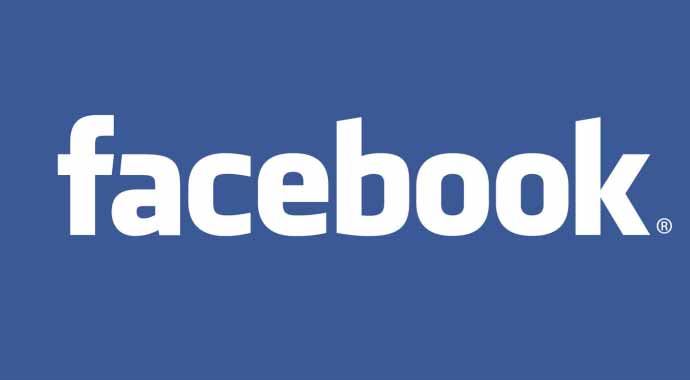
Facebook, undeniably the number one social networking channel on the internet today, offers some really powerful and innovative ways to show ads to your target audience. Facebook advertising has grown by leaps and bounds over the years and millions of companies are using this platform today.
Through these ads, you can reach people based on specific demographics such as, but not limited to, age, gender, location and interests. And, you can make use of certain metrics to understand how those ads are performing so you can continue to fine tune them; we’ll be discussing that in detail later down the article.
Here’s why Facebook happens to be one of the top platforms to display ads:
- 890 million people log in to their Facebook accounts everyday
- As of March 2016, there were 1.51 billion active users
- A total of 300 million photos are uploaded daily
- Every minute on Facebook, more than 500 comments are posted
- 42% marketers agree Facebook is critical to businesses
What Facebook Advertising is at its Core
Facebook ads are a form of online advertising and marketing where businesses can display their products and services on the Facebook platform. These ads can be found in two different places when users login to their Facebook account. The first ad can be found on the top-right corner of the page; these ads are not a part of social content that users see in their feed, so as not to be confused with something other than ads.
The second ad can be found within the social content on a business’s home page. This ad placement is designed or masked to make them look like they’re part of the social content feed.
Do I Need Facebook Ads In My Marketing Mix?
In a word, absolutely yes. Well, that’s two words, but you get the point!
Facebook advertising can be a highly profitable venture in the world of digital marketing and produces very reliable results at an affordable cost. You really need to make Facebook Ads a part of your digital marketing campaigns and here’s why:
Unprecedented Reach
People from every walk of life are on Facebook totally over 1.5 billion active users. There’s no audience base you can’t tap into. When you’re expanding your brand over a large geographical area, the simplicity and practically of Facebook Ads cannot be ignored. The number of people you can reach is directly tied to how much you’re willing to spend.
A Highly Customizable Audience
Facebook advertising happens to be the most versatile platform for displaying ads, compared to other social media channels. You can easily build custom campaigns based on what size and scope of audience you want to target. You can filter everything from age and location to city, race, gender, interests, likes. You can target prospects based on highly customizable parameters and create micro-campaigns when needed. The potential is just too big to overlook.
Meet Specific Targeting Objectives
You have to customize landing pages in order to ensure that you’re achieving specific targeting goals. Search engines only allow one or two unique kinds of ads while Facebook lets you create custom ad campaigns through which you can promote your Facebook business page, boost posts and likes, send more people to your home page and increase conversions, target people closer to your business, promote videos, leverage event attendance or increase mobile app installs. Facebook ads in some form or the other can achieve all this. The possibilities are endless.
Facebook Ads or Instagram Ads?
This largely depends on what kind of audiences you want to tap into and what your business objectives are. However, on the subject of creating, tracking and reporting ad campaigns, Facebook has an edge. Instagram does not offer the option to add clickable links to posts for one, which can make tracking campaigns somewhat cumbersome.
Facebook boasts the most well-rounded paid ad platform, compared to other social media sites. Apart from the laser-like targeting options, you can easily keep a check on campaign ROI with Facebook advertising.
In all honestly, Instagram hasn’t quite wowed marketers the way Facebook has.
Good to know:
- Facebook raked in $4.3 billion in ad revenue in the 3rd quarter of 2015
- More than 90% advertising and marketing agencies ran Facebook video ads this year
- 82% online adults between 18-29 use Facebook
4 Components of Great Facebook Ads
Visual Appeal
Content that’s visual is better treated by Facebook’s Algorithm. In addition, visual content can look more engaging in your dynamic News Feed, and therefore, there’s a higher chance users will be compelled to click on it. Irrespective of the ad style you want to go with, make it visually appealing. Beside, the human mind is better equipped to process visual signals, as opposed to text only.
Relevance
Depending on what settings you’re using, you have to pay every time someone views your ad. Relevance is an important component here because if you’re displaying ads irrelevant to the target audience, you won’t get much success out of Facebook Ads, while throwing money down the drain.
Facebook has a feature that rates your ad relevancy score. The higher this score, the more favorably your ads are treated by Facebook.
A Compelling Value proposition
The purpose of a value proposition is to let to let your readers know that they need to click your ad to learn more about your offerings. How do you things differently, compared to others in your niche or whey should users visit your site?
Work on a realistic and enticing value proposition: saying you make the greatest leather shoes this part of town will probably not get people to visit your home page but saying you’re offering 15% to early birds definitely will. Adding social proof can tremendously help too: “Rated top 3 most purchased shoes by a million young men and women across the state. Get a free pair with this coupon”.
A Distinct CTA (call to action)
A great-looking ad is fine; however, without the right call-to-action, your users might be left puzzled so as to what the next step is. Add a meaningful CTA which says “Avail this offer now and enjoy 10% savings” or “Limited Holiday offer, act now!”
This sense of urgency and extra benefit for the user works every time and better engages people to follow through your Facebook Ad. It’s more like using Sun Tzu’s Art of War.
Case Study: Making the Most of Facebook Ad Metrics
Brett McHale, a social expert at WordStream demonstrates how effective Facebook advertisement had proved for his business, while also showcasing the importance of staying focus on campaign initiatives.
Brett kicked off a campaign for blog posts, whitepapers and various other content resources titled The Digital marketer’s Road Map. Previously, he had achieved solid results focusing on more conventional metrics. However, this time around, Brett took into account how focusing mostly on Facebook Ad’s Relevance Score and CTR did not yield favorable conversions.
Now, since we’re talking Facebook advertising, you need to make use of existing metrics and re-apply them to your key goals, so to speak. For instance, if we take the above two metrics, they are regarded by Facebook as ‘very important’ because they are indeed interrelated.
However, if your key goal is lead generation, then those metrics are not as important, are they?
Before Brett started to apply these changes, his previous approach was not resulting in a lot of conversions, even though traditional Facebook metrics otherwise. He went back to the drawing board and decided to focus on the main value proposition and let the ads make their way to the target audiences. His Relevance Score dropped to around 5, which was previously between 7 and 9, while his CTR sunk as low as 0.68%, as opposed to 4-5%, while relying on traditional metrics.
Even though common sense tells us that things are not looking good. However, in Brett’s case, things couldn’t be better. Check out the full case study here.
Key Takeaway: Focus on the metrics that are the most relevant to your chief objectives, rather than following the default metrics that at the end of the day, may not even apply to your campaign initiatives. So in hindsight, apply the standard Facebook Ad metrics to your individual goals – if your strategy demands more leads and conversions, put CPA through the magnifying lens. If its driving more clicks while cutting costs, relative to the number of people you want to reach, focus on the Relevance Score.
Creating a Successful Campaign
Choose a Facebook Ads Campaign Objective
Facebook lets you create different kind of ads, and not all are the same. For example, some focus on getting more Likes for your Facebook page while others are perfect for getting users to check out a post that lands them right to your home page. Others might include getting people to try your new mobile app coax people to perform specific actions on your website.
So choose a campaign objective and keep all your Ad Sets coherent throughout. For instance, if your campaign’s chief goal is to generate more home page visits, ALL your ads must revolve around that goal.
Choose a Campaign Budget
Setting up your Facebook campaign is the first step. Next, set up your Ad Set. This is where you set a budget. Here, you can set the budget to ‘daily’ or ‘permanent’ and also choose your ad start/end dates.
Choose Your Facebook Audience
Facebook gives you great options to segment your audience, especially since the whole idea is to display ads to a highly targeted audience. You can target users on an individual ad level, which can be found under Ad Sets, an option that can be found under Campaigns. You can segment Facebook audiences through location, interests, age, languages, gender, relationship status, education level etc.
You also have the ability to make Custom Audiences, and through this option you can target users according to phone numbers, email IDs, mobile advertiser IDs, people who’ve already seen your site etc. Through these Custom Audiences, Facebook creates similar audiences based on common demographics the two share.
Where to Place Your Ads
You’ve decided what audiences you’re targeting and what action they must take; now you need to determine where the ads should be displayed in Facebook advertising.
Newsfeed: This is most common place to have your ads displayed. They show up very naturally in your user’s’ feeds, along with what they’re seeing from their friends and others they follow. Despite the “sponsored” tag on such ads, the posts look very genuine as users can like them and post comments.
Mobile News Feed: A larger share of internet traffic has gone mobile, and that’s no secret. Before resorting to this option, consider if your company website is mobile-friendly. Because user experience is a governing factor here – your ads should display seamlessly on all mobile devices.
Right-hand Column Ads: As we discussed right at the start of this article, these ads are displayed on the right side of the screen right below the “trending topics” section. These are the most common types of ad placement most businesses go with.
Choosing Ad Types for Facebook Advertising
There are many different ways you can post ads with Facebook advertising, with regard to specific business goals. However, we’re not going to discuss all of them in great detail due to certain time and screen real estate limitations. Here are three of the most common ones:
Page Post Engagement: These ads are ideal for boosting your videos, status photos or website link you’ve posted to relatively larger audience to leverage engagement, in the form of likes or shares, for instance. These ads are ideal for driving better engagement to your Facebook posts.
Page Likes: Establishing strong credibility on your social pages facilitates in making users understand that your business is liked by many. Therefore, it really pays to generate maximum Likes on your page. And when people “like” you, they are followers; they get to see everything that’s happening in your company right in their News Feed.
Website Clicks: These might sound similar to the first category, though the main idea is to drive the most traffic to your home page. By clicking these ads, users are taken right to your website and there’s also an option CTA to help them get there more conveniently.
Facebook Advertising – The Future
Almost all throughout 2015, Facebook saw the addition of 73 million users in the Asia-Pacific region, while adding 23 million users across the US, Canada and Europe. In the next 10-15 years, it is estimated that emerging markets such as Brazil and India, where millions of folks are starting to get online through smartphones and mobile phones, may very well be Facebook’s ideal markets.
You might want to prepare ahead of time, because Facebook Ads’ boom is something that’s going to play a major role in driving revenues and brand recognition, particularly in developing countries – Source.
The AOK Competitive Advantage
Facebook Ads are here to stay. Just about everyone who’s anyone, is on Facebook today:
- 66.1% people use Facebook daily
- Facebook has 1.09 billion daily users
- 91% millennials use Facebook
- The number of active Facebook users in the US alone is estimated to be at 169.2 million by 2018
- 100 million hours of videos are viewed daily
Making the most of what Facebook advertising has to offer is something a seasoned digital marketing firm can easily execute. Just let us know what your core business objectives are, and we’ll take it from there. Contact us now or dial 1.888.566.2577 for a FREE consultation.
About The Author
Dave Burnett
I help people make more money online.
Over the years I’ve had lots of fun working with thousands of brands and helping them distribute millions of promotional products and implement multinational rewards and incentive programs.
Now I’m helping great marketers turn their products and services into sustainable online businesses.
How can I help you?






